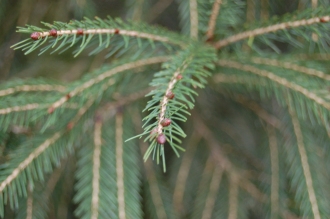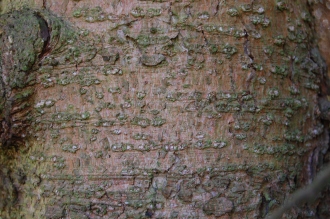Position: Full sun to partial shade
Flowering period: Spring
Soil: Moist, well drained
Eventual Height: 50m
Eventual Spread: 15m
Hardiness: 8a, 8b, 9a, 9b
Family: Pinaceae
Picea morrisonicola is a large coniferous evergreen tree with a conical habit.. Its dark green leaves are needle like, up to 15mm long and 3mm broad. Its trunk may achieve a diameter of up to 1.5m. Its grey/ red/brown bark is irregular cracked and scaly. Its flowers are in the form of pollen cones. Its fruit are pendulous cones, initially purplish maturing to brown and up to 7cm long.
Picea morrisonicola, commonly known as the Taiwan Spruce or Mount Morrison Spruce, is native to Taiwan. In its native habitat it grows in mountain ravines and mountain slopes at an altitude of 2500m to 3000m. Picea morrisonicola is classified as Vulnerable according to the IUCN Red List of Threatened Species.
The etymological root of the binomial name Picea is derived from the Lain Pix meaning ‘pitch or tar’ in reference to the Spruce trees resin. Morrisonicola is named after Mount Morrison, the English name for Mount Yushan in Taiwan, the location where this tree is indigenous.
The landscape architect may find Picea morrisonicola useful as a large evergreen specimen tree.
Ecologically, Picea morrisonicola seeds are attractive to some birds.
Picea morrisonicola prefers moist, fertile, well-drained soils. It tolerates most pH of soil.
Picea morrisonicola requires little maintenance.















